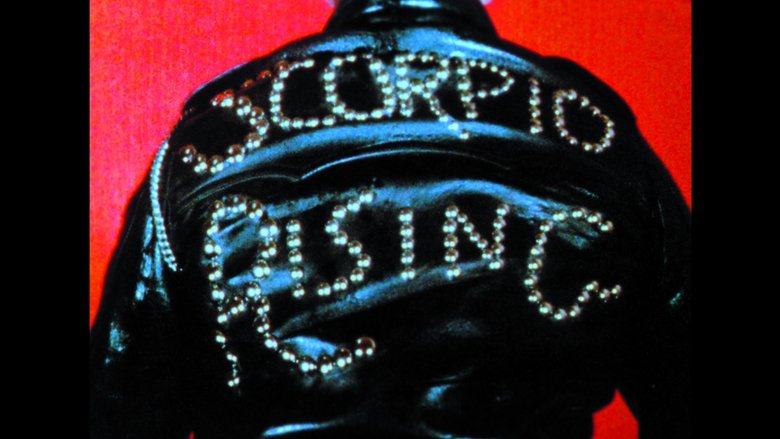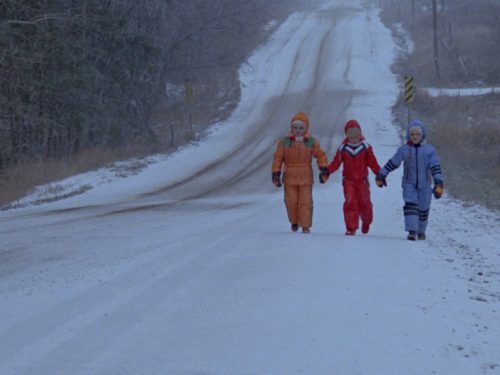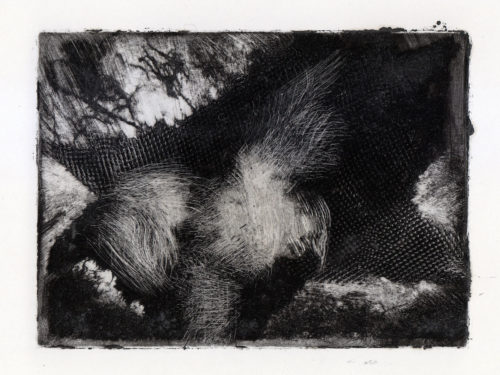Split Tooth remembers Kenneth Anger (1927-2023), a legend of American avant-garde filmmaking and a mythic figure in his own time, with a look at his wildly influential Scorpio Rising
Kenneth Anger’s was perhaps the exact kind of life you’d expect from the author of Hollywood Babylon. It was that of both a consummate insider and a perennial outsider, one at the vanguard and of the old guard, kissed with Tinseltown magick and still cursed by the business side of show business. If even half of the stories he told about his Zelig-like journey through mid-century cinema were true then he may have been the single most interesting person ever to hold a camera. Two of the facts of his early life, one of which remains in dispute, seem particularly crucial in their sheer improbability. The first is that he played the young changeling prince gifted to Titania in the 1935 adaptation of A Midsummer Night’s Dream. The second, verifiable, is that he directed his earliest surviving film, Fireworks (1947), as a teenager, over a long weekend while his parents were out of town for a funeral. That film’s giddy incineration of Americana tropes set the stage for Scorpio Rising (1963), the best and most influential work of Anger’s career.
In films that more directly explored his occult fascinations, Anger introduced viewers to a whole taxonomy of conjurers, gods, goddesses, demons, and other figures from a range of religious and spiritual traditions. Though the textured superimpositions and lush art direction of works like Inauguration of the Pleasure Dome (1954) still thrill, it’s his kaleidoscopic trip into a more immediately recognizable American male psyche, Scorpio Rising, that best accelerates viewers through Anger’s thematic preoccupations and most immediately marks him as a landmark filmmaker with still-felt influence. Earlier and later Anger masterpieces often gain their hazy, dreamy qualities from fades and dissolves. Scorpio Rising matches harsh cuts with luxuriant pans and emphatic zooms, a style that practically became the standard for cutting in Top 40 music videos. The hellions who make up the cast of Scorpio Rising are familiar, ubiquitous even, in a way Anger’s other deities and denizens usually aren’t. “I’ve always made films for myself,” Anger said in a career-spanning 2004 interview, “and how much of what I put into them is picked up by other people is not my concern. Otherwise I’d have program notes.” This one really doesn’t need the program notes, which is not to say that it’s in any way obvious. That some of its imagery and techniques might today be taken for granted is only a testament to Anger’s prodigious directorial prowess and his suffusion into the very fabric of cinema.
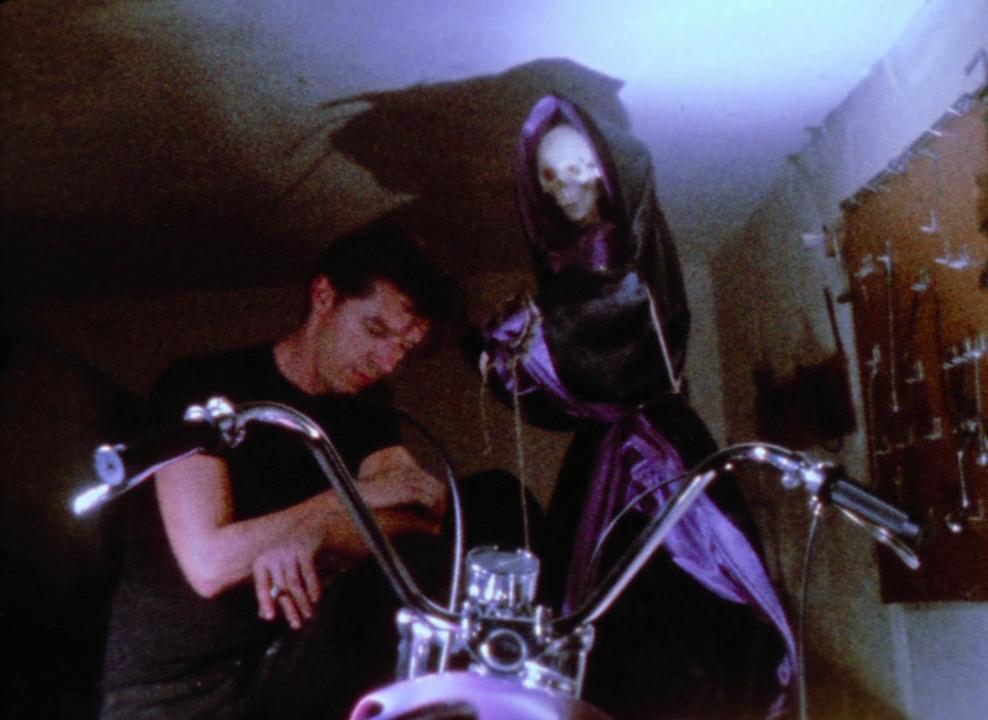
Though Scorpio Rising’s central figures have definitely put in the requisite hours of study, these characters’ rites and rituals don’t come from arcane texts. They have instead divined immense meaning and built identities, a whole spiritual and psychosexual practice, largely from everyday cultural detritus like Li’l Abner comics, pop 45s, and the brief on-screen heyday and eternal afterlife of James Dean. They embody an ever-evolving mass of contradictions that still beats beside the heart of a thrill-crazed nation. Even at its most extreme, there remains a sense that Scorpio Rising is merely following the path laid out by its characters’ very real everyday routines. This is a pseudo-spiritual lifestyle that mimics mainstream American 9-to-5 devotion as much as it lampoons it.
The film’s fractured day-in-the-life narrative begins with a young biker removing the cover from his vehicle and starting at his work. As Ricky Nelson’s “Fools Rush In” kicks in, we watch the first of many unnamed figures unveil his bike with evident tenderness. He’s less a child tearing the wrapping paper from a gift or a lusty teenager in the backseat than a bashful groom, peeling back his bride’s veil for a long-awaited kiss. Within seconds, however, Anger’s sly framing betrays the pulsing carnality on display. Loving pans across assortments of machinery give way to an upward tilt that reintroduces our biker. “When we met, I felt my life begin,” and we begin to sense Anger’s read on the ostensibly straight men who’ve agreed to star in his film. With a provocatively phallic piece of machinery placed at his crouching crotch, our introductory biker lovingly buffs and polishes. At a glance, he’s masturbating to the sight of his bike, exorcizing the revved-up desires their very presence inspires. After panning again across the shining chassis and imposing circuitry, our eyes land on a pair of empty boots. Sapped of life, they call to mind the foot of a bed or even condoms scattered roadside. They usher in the title card, really a title jacket. As engines roar in the background, a figure’s broad, leather-bound back fills the screen with Scorpio Rising and the name Kenneth Anger emblazoned across it. Once he’s fully penetrated the frame, the faceless figure turns and walks toward the camera in a gesture both threatening and inviting. All the film’s sublimated sexual energy seems to strut off the screen right towards us. Anger likened filmmaking to casting a spell and here the incantations start in earnest as a hand-drawn Scorpio icon also zooms at the lens.
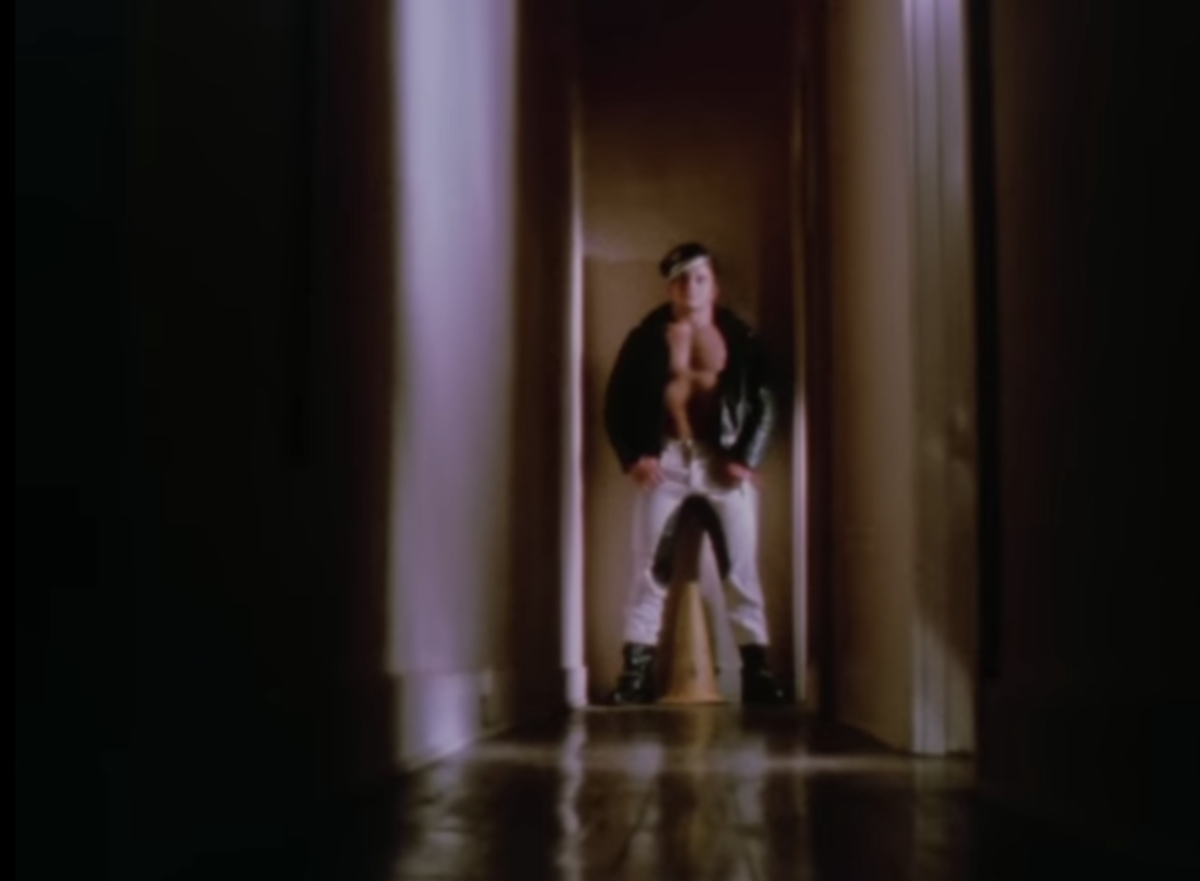
Plenty of films with more heteronormative lensing have found prurient fodder in the curves of automobiles. A comparative few have simultaneously affixed this lustful gaze on the male form. If the men featured in Scorpio Rising were genuinely shocked by the finished product, it speaks to the relative innocence of their time and suggests, perhaps, some willful naïveté on their parts. There is certainly never any mistaking what Anger’s camera makes of them. Tilting suggestively up bare torsos, lingering on hands as they fasten belts, and often settling in a crotch- or ass-level position, Anger never misses an opportunity to emphasize the Queer quality evident in all this hyper-masculine posturing. The second song on the soundtrack, Little Peggy March’s “Wind-Up Doll” eliminates any doubts as to the irony in his exploration of Coney Island’s biker subculture. Exaggerated sounds of turning gears coincide with plenty of genuine turning and tightening as well as insert shots of antique dolls. These inserts, dolls painted like police officers, imply a schism within the film, drawing a clear distinction between countercultural wind-up dolls who are slaves only to their bikes and those wind-up dolls who ride their bikes as willful instruments of mechanized order. Their clean paint jobs and strict formations suggest that hopping on a motorcycle is by no means a guarantee of personal freedom or a place on the right side of anything; it paves a road for the fascistic imagery to come.
The Grim Reaper, Thanatos, accompanies the opening and closing notes of “My Boyfriend’s Back” while looming approvingly over our pompadoured biker throughout. Luxurious inserts show hands screwing in nuts; the biker practically spanks pieces into place. As he kneels approvingly in admiration of his bike-cum-wife, Death lurks impassively just over his shoulder. The half-ridiculous compositions suit the soundtrack full of teenage melodramas and the preening machismo on display. They could just as easily suggest the alarmist suspicions of buttoned-up parents as they do the biker’s rough and tough self image. Toward the end of the song, a subliminal frame shows him gazing toward his grim boyfriend with over-the-top, open-mouthed affection. It’s the first of the film’s subliminal inserts and immediately calls both the first-time and repeat viewers’ minds to attention.
Anger’s feminization and festishization of his subjects gets cranked up yet again with the next track, Bobby Vinton’s ubiquitous “Blue Velvet.” Anger is so expert at editing to pop music, a technique he may have invented, that you practically forget that this song would go on to have a film named after it. The jackets and jeans become ornate formalwear, a chain a priceless piece of jewelry. Vinton’s song ends with the introduction of one of the film’s two primary deities, the quieter and more enigmatic of the pair. I’ll call him Virgo. First, a passionate pan across Virgo’s lounging body interrupts the footage of bikers getting dressed. Next, he practically leaps toward the viewer as he sits up with a start. Finally, he dons a jacket, turns, and stomps toward the camera in an echo of the title sequence. As the song draws to a close, we see him once again, first in close-up and then again at the end of a long hallway. After a tilt where a traffic cone and the leather on his pants combine to create an upward arrow, he makes his shadowy way toward us. He’ll appear just a few times more, framed in a close-up portrait, smoking against a black backdrop and silently observing the escalating bacchanal.
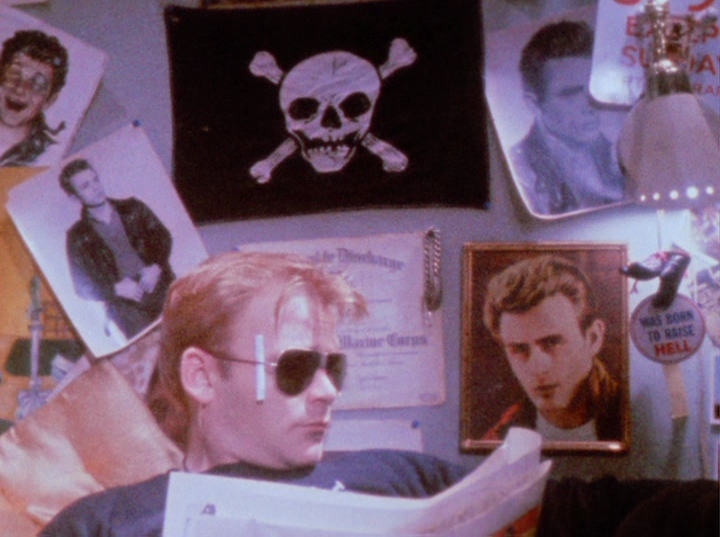
“(You’re the) Devil in Disguise” introduces us to the film’s other central figure and titular character, Scorpio (Bruce Byron, described by Anger as “half-crazy”) in repose. Smoking and stroking a Siamese cat, Scorpio lies surrounded by masculine totems in forms such as cigarette butts, pictures of James Dean and Marlon Brando, chains, and a patch reading “I WAS BORN TO RAISE HELL.” Scorpio ruminates over the funny pages as he slowly puts the finishing touches on his hellraiser costume, a leather bracelet and a ring for nearly every finger. On the television, Marlon Brando leads his gang in The Wild One. Subliminal shots show off smiling bikers and their machines and a packed shelf of racing trophies. These shots are playful in how benign they turn out to be. Could Anger have foreseen viewers almost 60 years later pounding the spacebar to catch stray frames? Probably not, but the provocateur obviously understood the power of suggestion. The snatches of footage that intermittently pop up throughout this sequence are like dirty jokes without a punchline. Anger begs us to look closer and then chides us for thinking he’d stoop so low as to emptily titillate. They imply a kind of purity to Scorpio’s pathology as well. He is not, Anger seems to suggest, redirecting his sexual urges through his fixation on his motorcycle. The bike and biking really are that intoxicating, powerful enough to inspire fantasies. Twice throughout this sequence, Scorpio hastens the pace of the cutting alongside a change of song. First, he slips on his boots as the needle drops on “Hit the Road, Jack” and then, as “Heatwave” by Martha Reeves and the Vandellas begins, he takes a bump of meth and the film shifts into its next movement. A noose hangs over his shoulder as he snorts, underlining the death drive evident on screen. Instead of a conventional wide-eyed reaction shot, Anger first shows a disheveled-looking toy and a wax figure of Bela Lugosi as Dracula. Scorpio is now equipped with reserves of energy and a sense of indestructibility. That said, while he can literally change the pace of the film, his is only the power of a wound-up toy or a vampire momentarily sated on blood.
Related: Death Trip USA: The Sinister Romance Of Richard Kern’s Manhattan Love Suicides
As Scorpio straps on his belt and the sounds of animals and engines skitter across the soundtrack, religious imagery joins the collage for the first time. Scorpio points a gun at the television and mimes firing a bullet at both a cross and menorah. As he ponders a preserved scorpion, glowing like the poisoned milk in Suspicion (1941), a shot of a muscled torso offers suggestions of what’s being sublimated with all this pageantry. Blurring the line between cop and criminal, devil and messiah, Scorpio accessorizes with mirrored sunglasses, a helmet, and a flashlight. While he marches to the beat of The Crystals’ “He’s a Rebel,” he couldn’t look more like a footsoldier of law and order. Once Scorpio moves out into the street, Anger begins comparing him to Jesus, the ultimate countercultural authority figure. Sure, describing Jesus through song lyrics or comparing him to a biker sounds like something you might make fun of a youth pastor for doing, but Anger does it to deliciously blasphemous effect. As Scorpio reaches a bike and, to our surprise, begins writing a ticket, Anger cuts to a scene of Jesus miraculously granting sight to a blind beggar. Two images, tucked almost invisibly into the montage, reinject the libidinal charge that was almost lost. The first image the beggar sees with his newly healed eyes is a purple-tinted shot of writhing naked bodies. As he kneels to kiss Christ’s robes, Anger inserts a shot of a penis poking through a fly. These, the film’s most explicitly pornographic images, lead into its most homoerotic sequence.
Jesus ushers his disciples indoors as we watch a group of bikers arrive at a Halloween party. By sheer coincidence of timing, their masks and costumes contribute a sinister quality to the proceedings. Claudine Clark’s “Party Lights” scores their arrivals and the ass-slapping horseplay that constitutes the festivities. The one glimpse we get of a woman partygoer reads like a mistake. She couldn’t look more out of place in this realm. Scorpio’s appearance is similarly brief and unexpected. A good number of the men in attendance, without evident prompting, drop their pants or remove their shirts for the camera. It seems only fitting when things reach a heightened, more overtly sexual, pitch. As “Torture” by Kris Jensen begins to play, the bikers initiate a new member into their crew through a kind of ritual mock torture. Decontextualized, the fraternal hazing cannot help but look both expressly violent and sexually charged. It’s hard to imagine what contextual information could possibly make pouring mustard on a friend’s bare genitals and carrying him around by his arms and legs look like a regular example of guys being dudes. Nevertheless, more than 30 years before Todd Phillips’ Frat House, Scorpio Rising’s cast invited Anger to expose the homophobic yet homoerotic behavior that binded their group. The initiate’s mix of fear and ecstasy calls to mind the look on Anger’s face as he anticipates a beatdown in Fireworks. The interpolation of animal sounds might play as bigoted if someone else had directed Scorpio Rising or if the actions of the characters on screen weren’t an ironic way of emphatically asserting their heterosexuality. Oliver Stone, after all, puts similar sounds under Clay Shaw and David Ferrie’s decadent, Camelot-toppling soirees in JFK (1991). Reflections captured against the chrome of motorcycles offer an appropriately refracted look at the action throughout this sequence. These are men who feel most alive astride a motorcycle, who believe a bike best reflects their idea of themselves despite the ways it warps and distorts.
Nazi imagery gets mixed in next as Scorpio situates himself in a church. Waving a gun in one hand and the Jolly Roger (a quaint, almost childish choice of insignia) in the other, he gesticulates in such a way as to seemingly direct the action on screen and move the bikers, his followers, with his hand. Anger intercuts Scorpio’s mad pontification with shots of Jesus, a scorpion, Adolf Hitler, and a motorcycle race, the last of the fall cycling season. The song on the soundtrack, “The Point of No Return,” sounds like whistling through a graveyard, putting a positive spin on the increasingly grim footage. As cyclists speed through a treacherous course, Jesus rides off to his fate on Palm Sunday and Scorpio grows more and more feverish in his rantings. The next song, “I Will Follow Him,” coincides with a perverse burlesque of Mass. Peggy March’s lyrics subtly suggest the apocalyptic turn the film is taking as “I will follow him” becomes “I must follow him;” it’s not quite “he hit me and it felt like a kiss,” but there is an ominous ring to the single-minded devotion on display. Scorpio removes his helmet and pisses into it before holding it over his head, offering it up like sacramental wine.
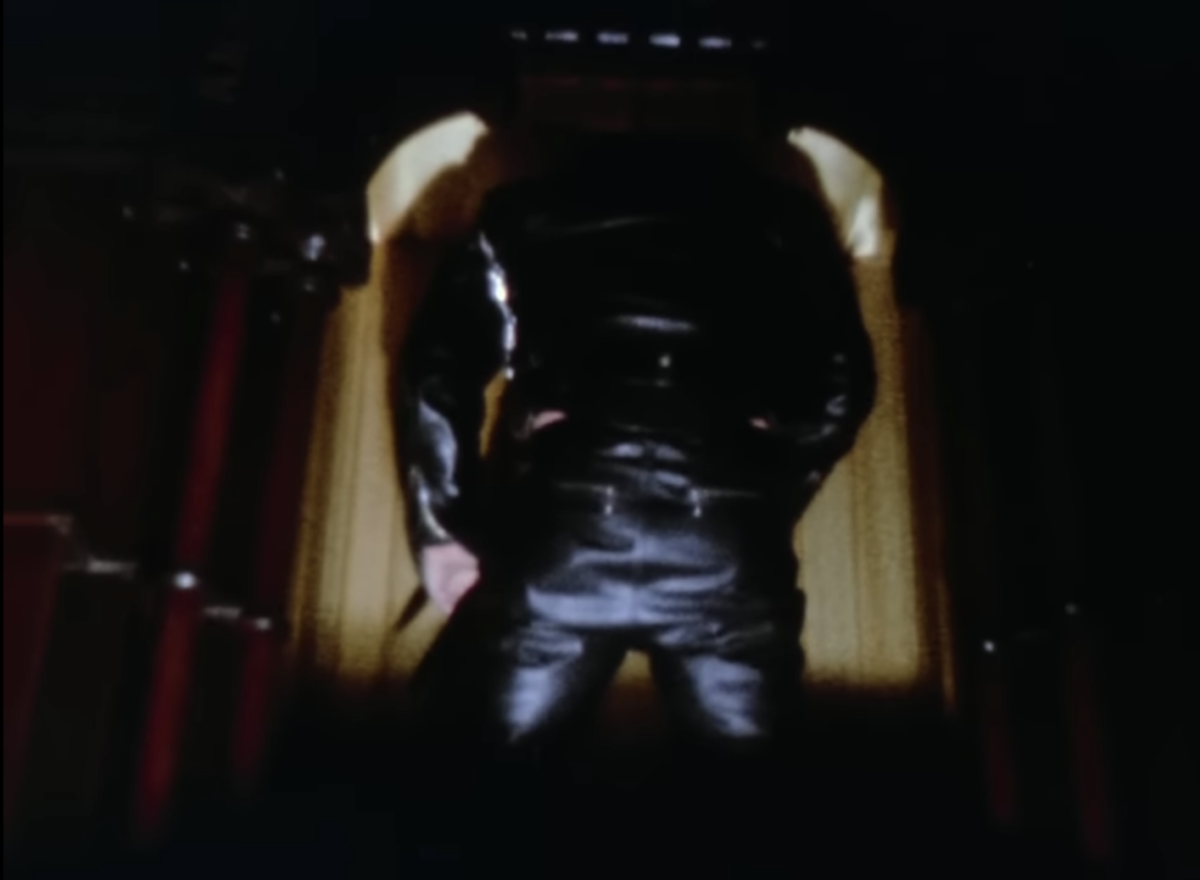
In that same 2004 interview, Anger seems to acknowledge that the film’s opening stretch is its best, that Scorpio Rising (inevitably) loses focus as it gains speed and Scorpio commands more screen time. “Paradoxically,” he says, “I’ve always felt that getting dressed up, putting on a costume is more exciting, more fascinating to watch, than striptease.” The quick diversion into chaos appears deliberate, an anticlimax by design. Anger knew nothing could live up to those ecstatic early sequences and never bothered trying, instead inviting the culminating crash. The film’s one and only corny image, a drawing of a long-haired skull smoking a cigarette marked “YOUTH” whose blank eyes suddenly turn into pictures of Jesus, leads into “Wipeout.” On screen, bikers crash and strobing police lights draw us to a screeching close.
Though he’d arguably never top Scorpio Rising, Anger produced vital, essential work into his later years. Mouse Heaven (2005) confirmed that he had lost none of his editing chops or impish desire to offend in the nearly 60 years since Fireworks. Throughout, Anger resurrects the bawdy Mickey Mouse of early Disney shorts with the help of a massive vintage toy collection. A sequence set to “I’m Your Puppet” by James and Bobby Purify especially calls to mind the luxuriously ogling camera and sly tone of Scorpio Rising’s early going. Mickey Mouse may have lost his edge over the decades, maturing from the udder-tweaking scamp of Steamboat Willie into an impossibly boring spokesperson, but Anger never did. His passing closes the book on more than one era and tradition. It could, however, open another book, welcoming the publication of his long-awaited third installment of Hollywood Babylon, unpublished for years due to its rumored dirt on the Church of Scientology.
Stay up to date with all things Split Tooth Media and follow Bennett on Letterboxd
(Split Tooth may earn a commission from purchases made through affiliate links on our site.)

